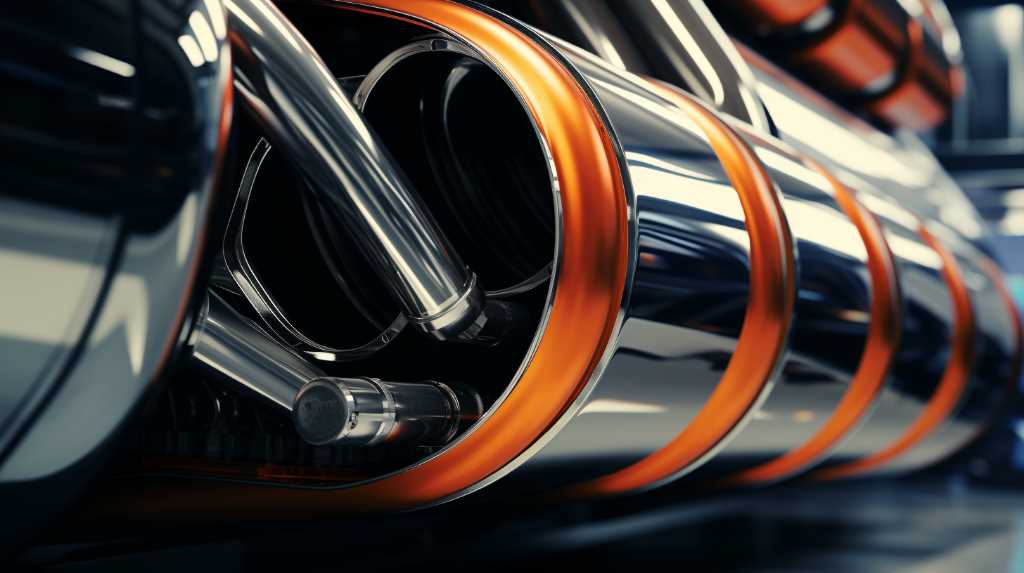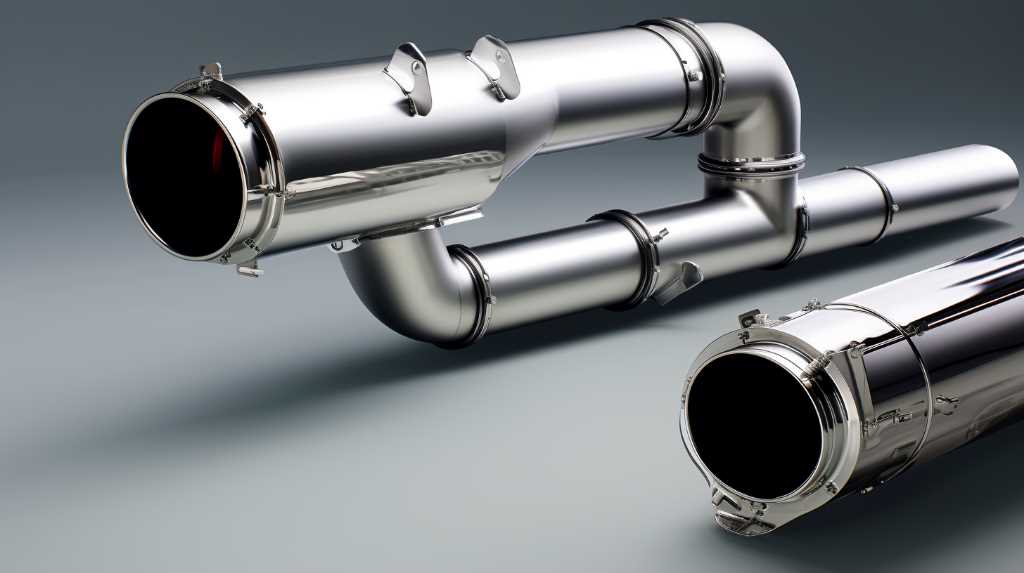Want to boost your vehicle’s performance? Discover the science behind exhaust flow and how mandrel bends can make a difference. In this article, we will explore the impact of mandrel bends on performance, and how they improve exhaust gas flow.
Learn about the factors that affect exhaust flow efficiency and find real-world examples of the performance gains achieved with mandrel bends. Get ready to unlock the potential of your vehicle with this fascinating science!
Key Takeaways
- Mandrel bends play a crucial role in improving exhaust flow and overall performance by maintaining a consistent diameter throughout the bend.
- Crush bends can negatively impact exhaust flow and performance due to tube collapse or wrinkling, leading to restrictions and turbulence.
- Factors such as the diameter of the exhaust pipe, length of the exhaust system, design of the exhaust manifold, choice of muffler, and type of catalytic converter can all affect exhaust flow efficiency.
- Real-world examples have shown tangible performance gains in terms of increased horsepower, torque, throttle response, and acceleration when upgrading the exhaust system with mandrel bends.
The Basics of Exhaust Flow
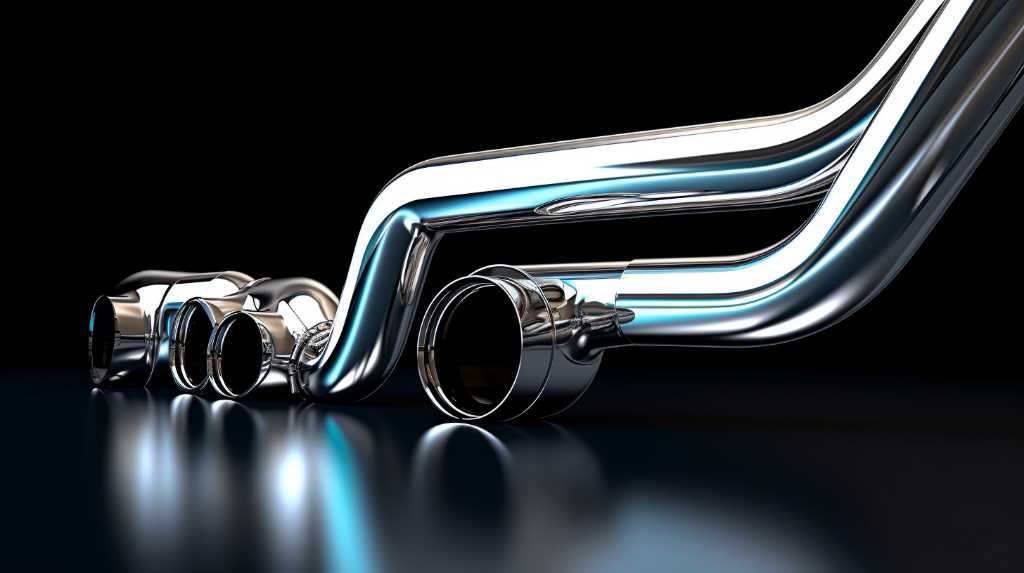
You’ll quickly understand the importance of exhaust flow when it comes to maximizing performance. The basics of exhaust flow involve understanding how the gases move through the exhaust system and how they can be efficiently expelled. When your engine burns fuel, it produces exhaust gases that need to be released from the engine. These gases travel through the exhaust manifold, which collects them from each cylinder and directs them into the exhaust pipe.
To ensure optimal performance, it’s crucial to have a smooth and unrestricted flow of exhaust gases. Any restrictions or obstructions in the exhaust system can hinder the flow and negatively impact engine performance. This is where mandrel bends come into play.
Mandrel bends are specially designed bends in the exhaust pipe that maintain a consistent diameter throughout the bend. Unlike crush bends, which can restrict the flow by reducing the diameter of the pipe, mandrel bends allow for smooth and uninterrupted exhaust flow. By reducing restrictions and maintaining a consistent exhaust flow, mandrel bends help to improve engine efficiency and increase power output.
Understanding Mandrel Bends
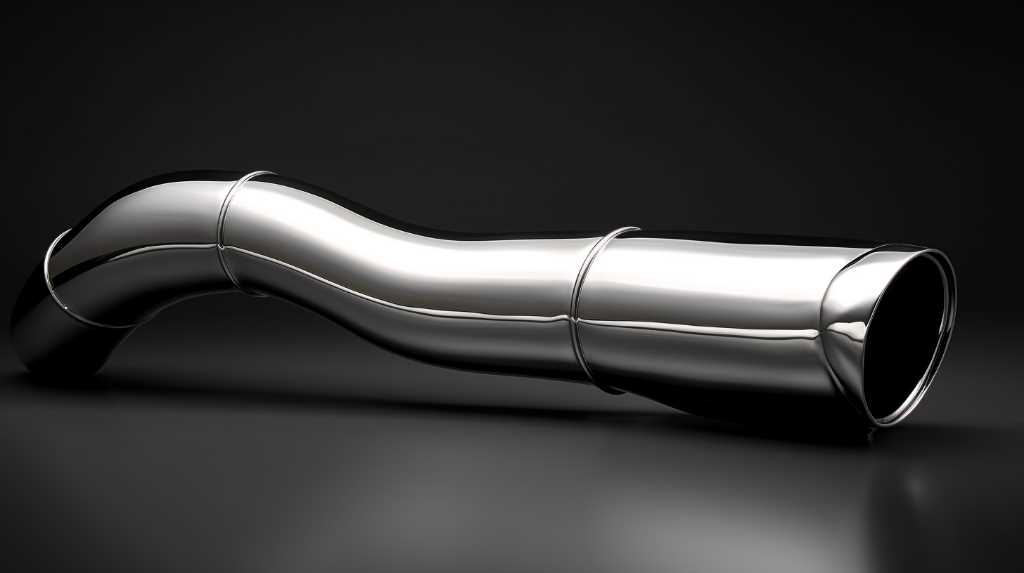
So, you want to understand mandrel bends and how they can improve your vehicle’s performance? Well, let’s start by discussing the performance benefits of mandrel bends. These bends maintain a consistent diameter throughout the entire curve, allowing for smoother airflow and reducing restrictions.
Additionally, mandrel bends are superior to crush bends, which can cause turbulence and hinder exhaust flow.
Performance Benefits of Mandrel Bends
When using mandrel bends, you can experience improved performance in your vehicle’s exhaust system. Mandrel bends are designed to maintain a constant diameter throughout the bend, unlike traditional crush bends that can restrict airflow and reduce performance.
By allowing exhaust gases to flow smoothly and efficiently, mandrel bends help to reduce backpressure, increase horsepower, and improve overall engine performance. The smooth interior surface of mandrel bends also helps to minimize turbulence and reduce the risk of exhaust gas leakage.
Additionally, mandrel bends are known for their durability and longevity, as they’re less prone to cracking or breaking under high heat and pressure.
Mandrel Bends Vs. Crush Bends
By understanding mandrel bends, you can make informed decisions about how they compare to crush bends in terms of exhaust flow and performance. Mandrel bends are created using a mandrel, which is a solid rod inserted inside the tube during the bending process. This mandrel supports the tube and prevents it from collapsing or deforming when bent. As a result, mandrel bends maintain a consistent inner diameter throughout the bend, allowing for smooth and uninterrupted exhaust flow.
On the other hand, crush bends are created by simply bending the tube without any internal support. This often leads to the tube collapsing or wrinkling on the inside, causing restrictions and turbulence in the exhaust flow. Ultimately, mandrel bends are superior to crush bends when it comes to optimizing exhaust flow and maximizing performance.
The Impact of Mandrel Bends on Performance
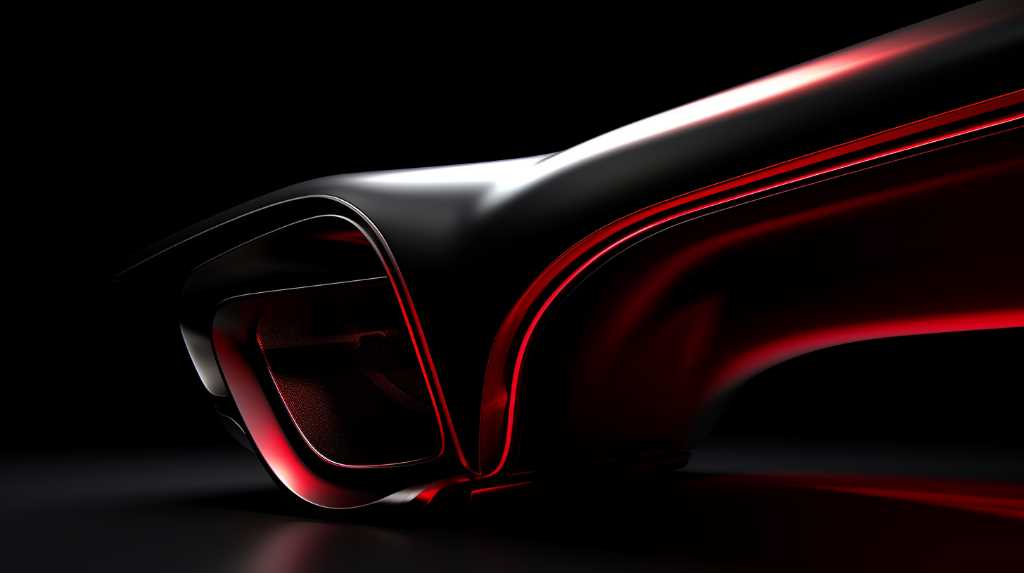
When it comes to the impact of mandrel bends on performance, there are several key points to consider. First, mandrel bends can increase horsepower potential by reducing restrictions in the exhaust system. Secondly, they improve exhaust gas flow, allowing for a smoother and more efficient exit of gases from the engine. Lastly, mandrel bends contribute to enhanced engine efficiency, as they help optimize the overall performance of the exhaust system.
Increased Horsepower Potential
How can mandrel bends increase your horsepower potential? Mandrel bends are designed to improve the flow of exhaust gases, allowing them to exit the engine more efficiently. This smooth and unrestricted flow helps to reduce back pressure, which is a major factor in limiting horsepower.
By reducing back pressure, mandrel bends allow the engine to breathe easier, resulting in increased power output. The improved exhaust flow also helps to reduce heat buildup in the engine, which can further enhance performance. With mandrel bends, you can expect to see a noticeable improvement in horsepower and torque, providing a more exhilarating driving experience.
Improved Exhaust Gas Flow
With mandrel bends, you can experience a significant improvement in exhaust gas flow, resulting in enhanced performance. Mandrel bends are designed to maintain a constant internal diameter throughout the bend, compared to crush bends which can restrict the flow of exhaust gases.
By allowing the exhaust gases to flow smoothly and efficiently, mandrel bends minimize back pressure and increase the overall horsepower and torque output of your vehicle. This improved exhaust gas flow also helps to reduce engine heat, as it allows for quicker and more efficient evacuation of hot gases from the engine.
Additionally, with better exhaust gas flow, your engine can breathe easier, leading to improved fuel efficiency and throttle response.
Enhanced Engine Efficiency
You can expect a noticeable increase in engine efficiency by incorporating mandrel bends into your exhaust system. Mandrel bends allow for smoother and more efficient flow of exhaust gases, which has a direct impact on your engine’s performance.
By reducing restrictions and minimizing turbulence, mandrel bends help the engine expel exhaust gases more easily. This improved flow leads to better scavenging, where fresh air-fuel mixture is more effectively drawn into the combustion chamber, resulting in improved combustion efficiency.
As a result, you can experience enhanced power output, improved fuel economy, and reduced emissions. Mandrel bends also help maintain consistent backpressure throughout the exhaust system, ensuring optimal engine performance across different RPM ranges.
Improving Exhaust Gas Flow With Mandrel Bends
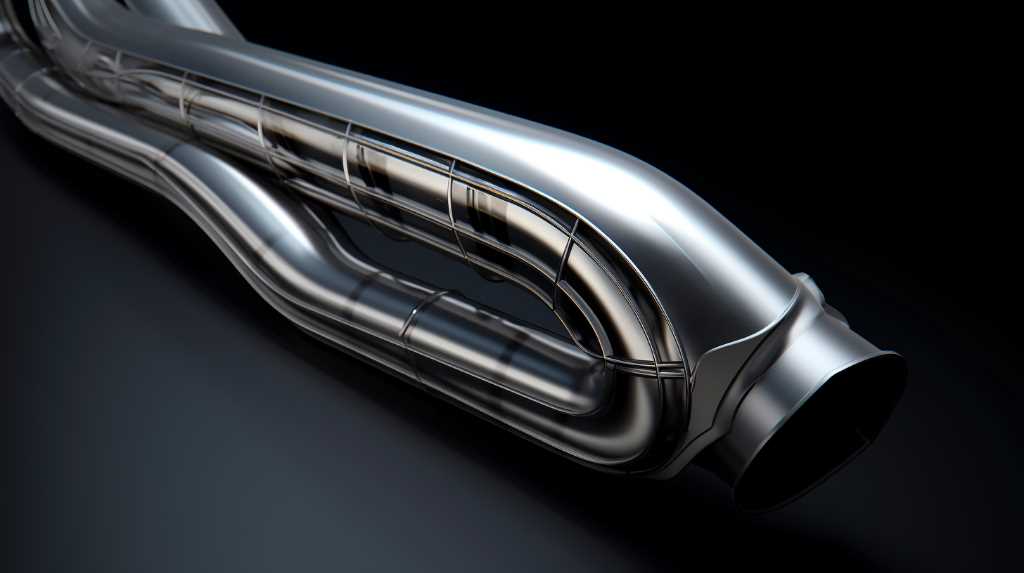
To maximize your vehicle’s performance, you should consider using mandrel bends to improve the flow of exhaust gas. Mandrel bends are superior to traditional crush bends because they maintain a constant diameter throughout the bend, ensuring a smooth and uninterrupted flow of exhaust gases. This allows for better scavenging of exhaust gases from the combustion chamber, which in turn improves engine efficiency and performance.
Mandrel bends are made by inserting a mandrel, a solid rod, into the tube before bending. The mandrel supports the tube and prevents it from collapsing or deforming during the bending process. This ensures that the diameter of the tube remains consistent, eliminating any restrictions or turbulence that could impede exhaust flow.
By improving exhaust gas flow with mandrel bends, several benefits can be achieved. Firstly, there’s a reduction in backpressure, which occurs when exhaust gases are unable to exit the engine efficiently. This reduction in backpressure allows the engine to breathe more freely, resulting in increased power and torque.
Additionally, mandrel bends help to reduce exhaust gas temperatures. By allowing the gases to flow smoothly and efficiently, heat is dissipated more effectively, preventing the build-up of excessive heat in the exhaust system. This can help to prolong the life of the exhaust components and prevent potential damage from excessive heat.
Factors Affecting Exhaust Flow Efficiency
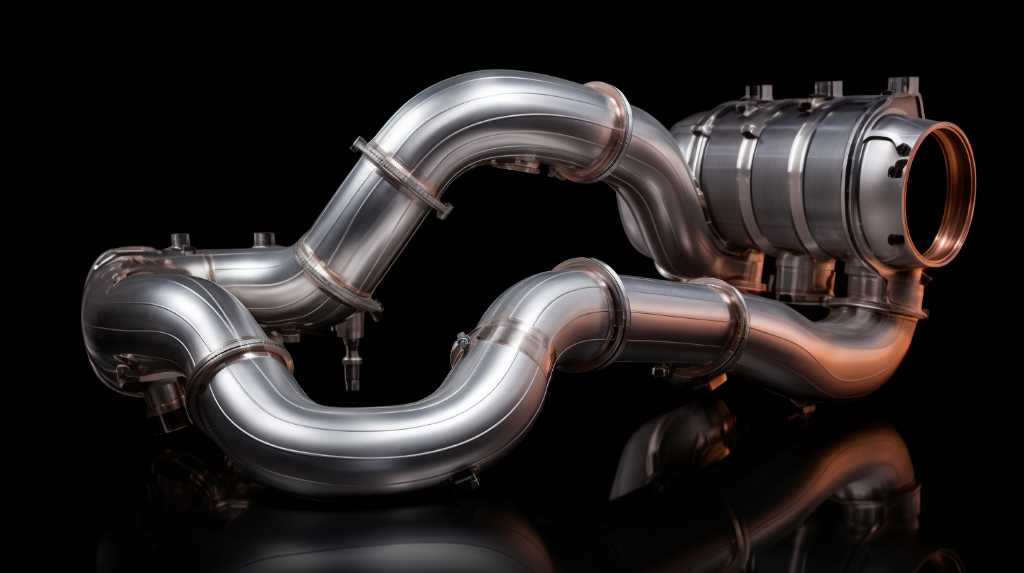
By considering various factors and optimizing them, you can improve the efficiency of exhaust flow in your vehicle. One important factor is the diameter of the exhaust pipe. A larger diameter allows for better flow, as it reduces the resistance that the exhaust gases encounter. However, it’s important to find the right balance, as an excessively large diameter can lead to a loss of torque.
Another factor to consider is the length of the exhaust system. A shorter exhaust system can improve flow efficiency by reducing the distance the gases have to travel. However, it’s crucial to keep in mind that a too short exhaust system can negatively impact torque and low-end power.
The design of the exhaust manifold is also crucial. Smooth bends and a well-designed collector can reduce turbulence and improve flow efficiency. Additionally, the choice of muffler can affect flow efficiency. High-flow mufflers with straight-through designs can reduce back pressure and improve exhaust flow.
Lastly, the type of catalytic converter used can also impact flow efficiency. High-flow catalytic converters allow for better flow, while still effectively reducing emissions.
Real-World Examples of Performance Gains With Mandrel Bends
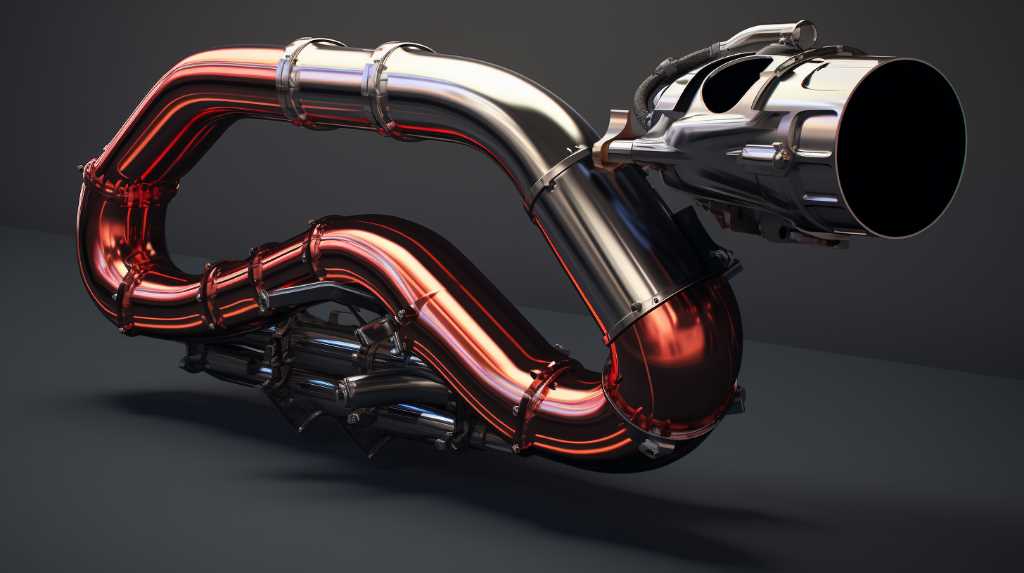
When using mandrel bends in your exhaust system, you can experience significant performance gains. Let’s take a look at some real-world examples to understand how mandrel bends can improve your vehicle’s performance.
In a study conducted by a performance exhaust manufacturer, they compared the performance of two identical cars: one with a stock exhaust system and the other with a mandrel bent exhaust system. The results were impressive. The car with the mandrel bent exhaust system showed a noticeable increase in horsepower and torque. The improved exhaust flow allowed the engine to breathe better, resulting in greater power output.
Another example comes from a professional racing team. They decided to switch to a mandrel bent exhaust system to optimize their vehicle’s performance on the track. The team reported a significant improvement in throttle response and acceleration. The mandrel bends reduced backpressure, allowing the engine to expel exhaust gases more efficiently. This not only enhanced the car’s overall performance but also contributed to better lap times.
These real-world examples demonstrate the tangible benefits of using mandrel bends in your exhaust system. By improving exhaust flow, mandrel bends can increase horsepower, torque, throttle response, and acceleration, ultimately enhancing your vehicle’s overall performance.
Whether you’re a racing enthusiast or simply looking to get more out of your car, mandrel bends can make a noticeable difference. So, consider upgrading your exhaust system with mandrel bends and experience the performance gains for yourself.
Frequently Asked Questions
What Is the Difference Between a Mandrel Bend and a Regular Bend in an Exhaust System?
A regular bend in an exhaust system is made by crushing the pipe, restricting airflow and reducing performance. In contrast, a mandrel bend retains the pipe’s shape, allowing for smooth and efficient exhaust flow, enhancing performance.
Are Mandrel Bends Only Beneficial for High-Performance Vehicles, or Can They Improve the Performance of Any Vehicle?
Mandrel bends can improve the performance of any vehicle, not just high-performance ones. They allow for smoother exhaust flow, reducing restrictions and improving power and efficiency. So, yes, mandrel bends are beneficial for any vehicle.
Can Mandrel Bends Help Reduce Exhaust Noise?
Yes, mandrel bends can help reduce exhaust noise. By allowing for smoother and more efficient airflow, mandrel bends can minimize turbulence and vibrations, resulting in a quieter exhaust system for your vehicle.
How Do Mandrel Bends Affect the Fuel Efficiency of a Vehicle?
Mandrel bends can improve fuel efficiency in your vehicle. They create smoother exhaust flow, reducing back pressure and allowing for better engine performance. This means your engine can work more efficiently, saving you fuel.
Are There Any Downsides or Limitations to Using Mandrel Bends in an Exhaust System?
There are a few downsides or limitations to using mandrel bends in an exhaust system. These include increased cost, difficulty of installation, and potential clearance issues. However, the performance benefits often outweigh these drawbacks.
Conclusion
In conclusion, mandrel bends play a crucial role in improving exhaust flow and enhancing performance. By maintaining a consistent inner diameter throughout the bend, mandrel bends eliminate restrictions and allow for smoother airflow. This results in increased horsepower, improved fuel efficiency, and reduced exhaust backpressure.
Whether in racing or everyday driving, choosing mandrel bends can provide significant performance gains and optimize the overall performance of a vehicle’s exhaust system.
Related Articles
The Ultimate Guide to Performance Car Exhaust Systems
Next Exhaust Article: Tuning Your Exhaust Note: a Deep Dive Into Exhaust Sound Modifications
Previous Exhaust Article: The Benefits of Cat-Back Exhaust Systems: A Buyer’s Guide

Hey there, I’m Terra Frank, the driving force behind Motion Performance Motor Sports. I’m thrilled to have you here, exploring the fascinating world of cars, trucks, and everything related to automotive performance and accessories.
